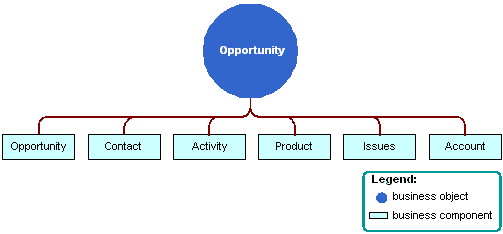An Enterprise Business Object (EBO) is a standardized data structure used in enterprise applications to represent real-world business entities. It is a key concept in Service-Oriented Architecture (SOA) and Enterprise Resource Planning (ERP) systems, helping in seamless data integration and communication across different enterprise systems.
EBOs provide a common data model that ensures consistency, flexibility, and reusability when integrating various applications such as CRM, HR, finance, supply chain, and customer management systems.

Key Characteristics of Enterprise Business Objects
- Standardization – EBOs follow a predefined format, ensuring uniformity in data representation across different systems.
- Reusability – They can be reused across multiple applications without modification.
- Encapsulation – EBOs contain all relevant attributes and behaviors of a business entity, encapsulating data and related business logic.
- Interoperability – They allow different software applications to exchange information without compatibility issues.
- Extensibility – EBOs can be extended or customized based on business needs without affecting the core structure.
Components of an Enterprise Business Object
| Component | Description |
|---|
| Attributes | Data fields that store information (e.g., Employee ID, Name, Salary in an Employee EBO). |
| Relationships | Links between different EBOs (e.g., Employee EBO linked to Department EBO). |
| Methods | Business logic or functions that process the object’s data (e.g., calculating payroll). |
| Events | Triggers that notify changes in the object (e.g., status change from “Pending” to “Approved”). |
| Metadata | Additional data describing the object (e.g., version, timestamps). |
Examples of Enterprise Business Objects
- Customer EBO – Represents customer details, including name, contact, purchase history, etc.
- Order EBO – Contains order details like order ID, items, billing, shipping address, etc.
- Employee EBO – Holds employee information such as ID, department, salary, and joining date.
- Invoice EBO – Represents invoices, including amount, due date, and payment status.
Role of EBO in Enterprise Systems
- Data Consistency – Helps maintain a single source of truth by standardizing data across multiple departments.
- System Integration – Enables seamless data exchange between applications like ERP, CRM, and HRMS.
- Business Process Automation – Supports workflows and automation by standardizing business transactions.
- Scalability – Easily adapts to growing business needs and technology upgrades.
FAQs
EBO in Service-Oriented Architecture (SOA)?
In SOA, EBOs play a crucial role in communication between web services. They define standard data exchange formats to ensure different systems understand and process data correctly.
For example, in an e-commerce platform, the Order EBO may interact with Inventory EBO, Payment EBO, and Shipping EBO to complete a transaction efficiently.
Differences Between EBO and Traditional Data Models?
| Feature | Enterprise Business Object (EBO) | Traditional Data Model |
|---|
| Focus | Business-oriented | Database-oriented |
| Flexibility | Easily extendable and reusable | Rigid structure |
| Integration | Seamless across multiple systems | Requires custom integration |
| Scalability | Supports system expansion | Limited to database schema |